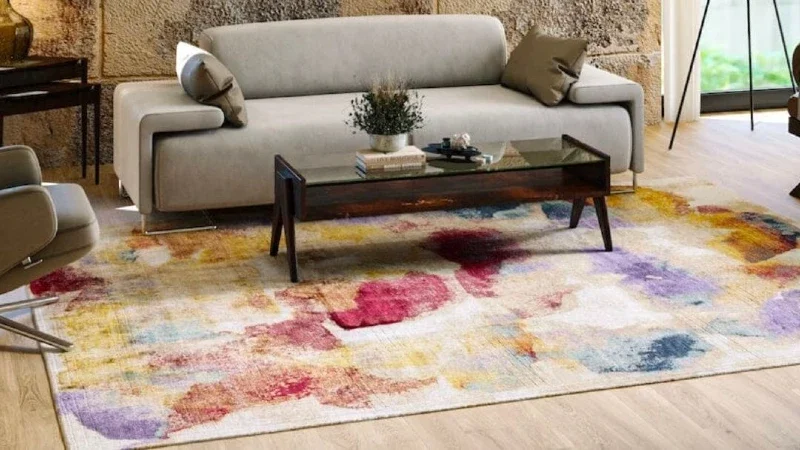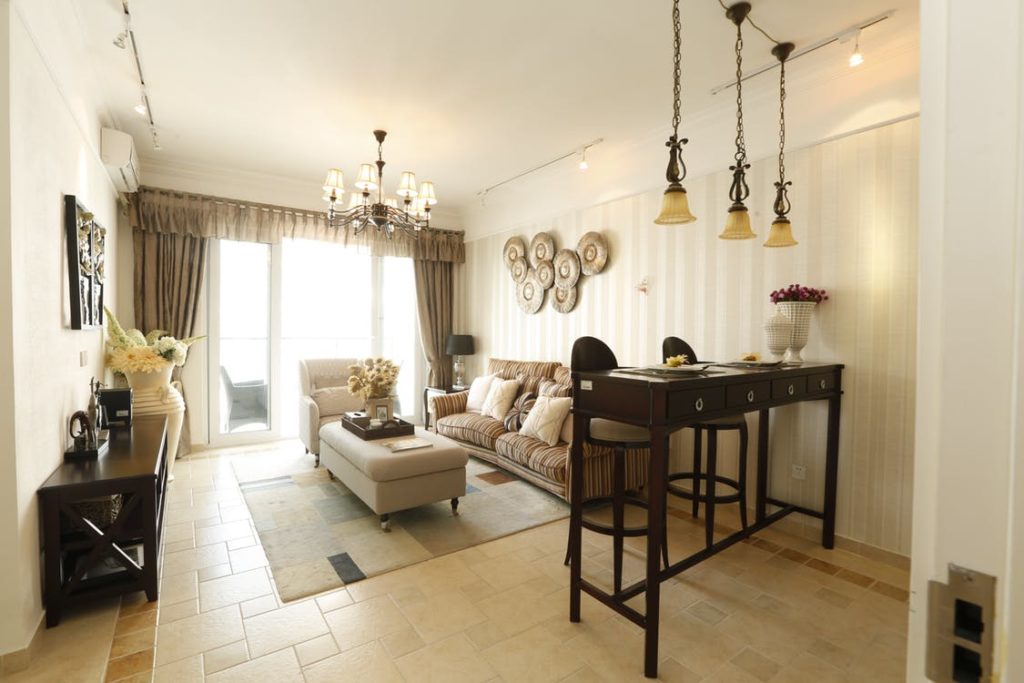Disclosure: This post may contain affiliate links, meaning we get a commission if you decide to make a purchase through our links, at no cost to you. Please read our disclosure for more info.
Gabbeh rugs are true works of art that tell the story of their makers and the nomadic cultures from which they originated. They pair beautifully with neutral color schemes while also shining in contrast to a vibrant or colorful room.
They are characterized by open fields and simple geometric patterns that incorporate motifs such as animals, plants, and people.
In This Post:
Colors
Gabbeh rugs are crafted with bold, natural dyes. These unique rugs often feature a sparse design with only a few motifs and decorative objects. The rugs’ soft wool and tight weave make them comfortable and durable.
They can be used as a centerpiece in the home or as an accent to traditional, contemporary, minimalist, rustic, or bohemian decor. Gabbeh rugs pair well with patterned throw blankets, textured pillows, and wood or woven furniture. They also work well in rooms with many natural elements, including indoor plants and woven baskets.
The motifs are inherently playful, capturing the spirit of improvisation and expression. They also tell a story, reviving the rich heritage of the nomadic Qashqai tribes who weaved them for generations. Each rug is a one-of-a-kind work of art, reflecting the personal expression of the weaver.
Materials
Gabbeh rugs are traditionally woven from high-quality, hand-spun wool. They use natural vegetable dyes that rely on indigo, madder root, pomegranate, onion skins, and other earthly elements to create an array of rich colors.
This rug’s unique blend of materials provides unparalleled durability and exceptional stain resistance. The wool also retains a high amount of its natural lanolin, which creates an environment that discourages the growth of dust mites.
These features give the rugs a rustic feel and a sense of their nomadic heritage. They can play well with natural decor, including indoor plants, woven baskets, and raw metals. Gabbeh rugs are also well-suited to decor that incorporates multiple patterns and textures. The inherent irregularities of these rugs allow them to play well with other patterns and colors while simultaneously fostering an atmosphere of relaxation. They are perfect for creating a focal point in a room or accenting an existing element.
Weaving Techniques
It offers an array of rich hues that showcase their nomadic heritage. Natural vegetable dyes create a palette of earthy browns and yellows, rust reds, and vivid blues. They also feature a hint of naivety in their design motifs, which elevate them from utilitarian pieces into works of art.
Weavers weave these rugs by hand, creating a thick, durable pile that is soft underfoot. They often improvise their work, inspired by their surroundings and the stories of nomadic tribes. This unique craftsmanship lends a charming individuality to every rug, which pairs well with natural accents like indoor plants, woven baskets, and raw metal furniture.
A Gabbeh rug’s thick, plush texture adds comfort and coziness to any space. It also offers sound absorption, making it an ideal choice for rooms with hard floors. To ensure your rug lasts as long as possible, avoid placing it in areas with excessive sunlight or dampness.
Value
Each rug is a one-of-a-kind piece of art, reflecting the personal expression of its weaver. As such, the traditional rugs hold great emotional and cultural value for their owners.
Traditionally, it was made of unspun wool and used no dye. However, weavers gradually began incorporating herbal and natural colors into weaving to create richer visual textures. The color palette of Gabbeh rugs is vast and varied, with hues including earthy beiges and browns, rich reds, and deep blues.
Modern Gabbehs often use geometric ornaments and arrangements of colorful tiles, with some woven with frames or borders in different shades of the same color. Many also feature a black and white checkered pattern, representing the nomadic weavers’ days of good and bad fortune. Proper cleaning is essential for maintaining the beauty of your Gabbeh rug. Vacuum regularly to remove dirt and debris, but avoid using a beater bar that can damage wool fibers. Always blot spills immediately to prevent staining.
Image Source: Tufenkian Artisan Carpets


